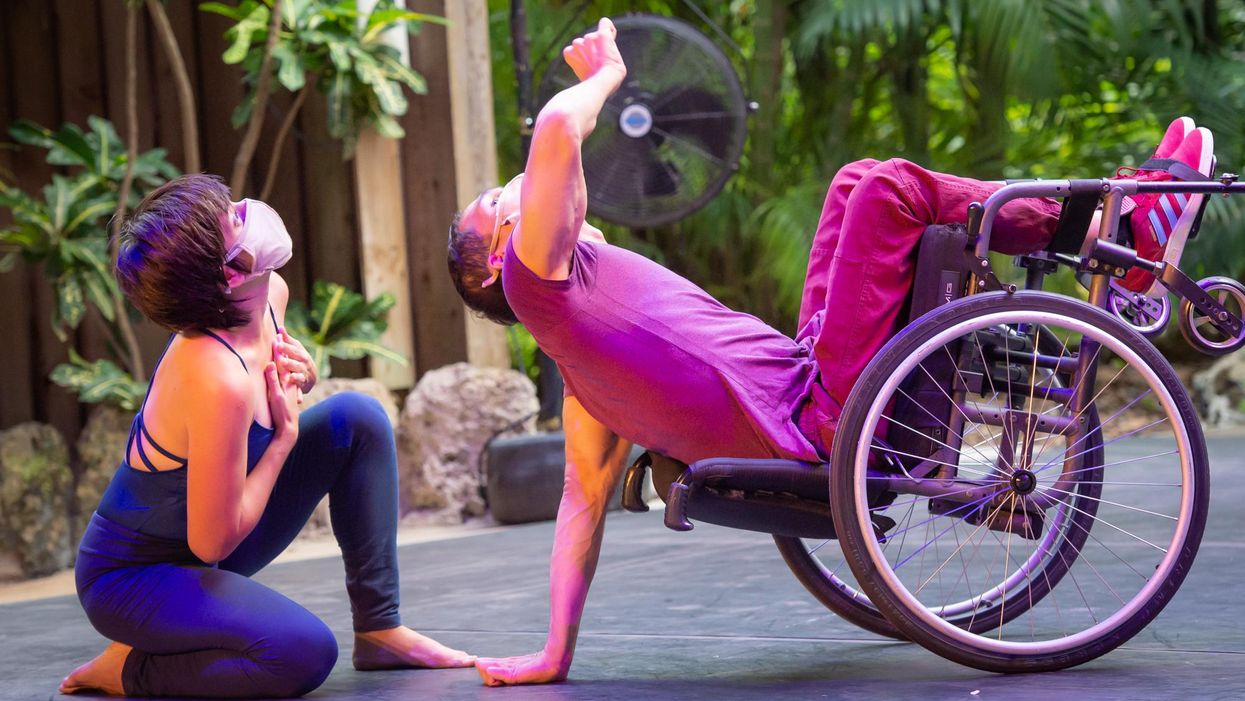Former Gymnastics Champion Jesus Vidal on Finding Physically Integrated Dance and Why Representation Matters
As a national gymnastics champion in his native Dominican Republic, Jesus Vidal mastered feats that placed him in competitions around the globe. But while training in South Florida for the 2016 Rio Olympics, he suffered a spinal cord injury during a floor exercise that spun his world into an unexpected orbit. Through months of recovery, he struggled with depression and had to learn to adapt to a new mobility in a wheelchair.
In time, though, Vidal reconnected to his athletic power and found his way to physically integrated dance after bonding through his therapist with a member of Karen Peterson and Dancers. Debuting with the Miami company in 2018, Vidal also rediscovered the joy in artistic expression he first felt as a child studying dance.
Now he’s meeting the challenge of performing Remember When—an evocative solo AXIS Dance Company artistic director Marc Brew choreographed for himself in 2008—at the third annual Forward Motion Festival in Miami, September 22–25. Vidal will also perform a duet with KPD’s Penelope Huerta in Lost and Found, a collaborative take on the COVID-19 pandemic that Karen Peterson Corash choreographed as a record of travail and spiritual triumph.
How were you drawn to physically integrated dance?
I went to ballet classes until I joined the gymnastics club at school at 13, and then the sport just took over my life. Around 19, I started getting into hip hop, so I never lost my love of dance. Following my accident, my therapist introduced me to Shawn Buller, who’d been with KPD for a long time. She’s gone on to become a mentor. Everything in her story inspires me, and she has made me a stronger person. One day she mentioned Karen’s company was having an audition and urged me to go. After some hesitation, I figured, Well, why not? Karen accepted me, and that went on to open my eyes, especially after I saw AXIS [Dance Company] perform at the first Forward Motion Festival. Those dancers were so passionate in transmitting their stories, and I wanted to do the same. I’ve grown ever since, but I still consider myself green.
Tell us about preparing to dance Remember When.
The piece is based on looking back and how what used to be merges into the present. It’s very intimate. Marc and I have gone through the same issues, both physical and emotional. We’ve been working together via hourlong video chats twice a week. He records the sessions and then sends them to me so I can polish my interpretation. Though I’m vaccinated, I prefer to be extra safe, and this actually feels freer.
What has been the most challenging aspect of this?
Marc’s level of injury is lower than mine, which to a degree limits the full function of my hands. So, we’ve had to adapt the movements while keeping them fluid. Marc believes—and we’ve seen this together—that, no matter how choreography is built, it can be modified to make it look seamless.
As a Latino with a disability, what does representation in dance mean to you?
I continue to do this, though my schedule is tight with college and a job, because I see how it brings people in. It’s an opportunity to connect and be part of a change to educate others. When we don’t do this, we close doors, and there’s no growth.
Those who attend our performances are incredibly impressed and get emotional. If there’s an opportunity to open someone’s heart, I like to be there. This is especially important when it comes to Latinos for whom this kind of dance is less visible. I hope seeing my performance in a wheelchair is a wake-up call. That’s why I keep working at giving more with every show and advocating for my community. If I manage to keep on top of this, always aiming to be creative, I’ll stay truer to who I am and what I think.




